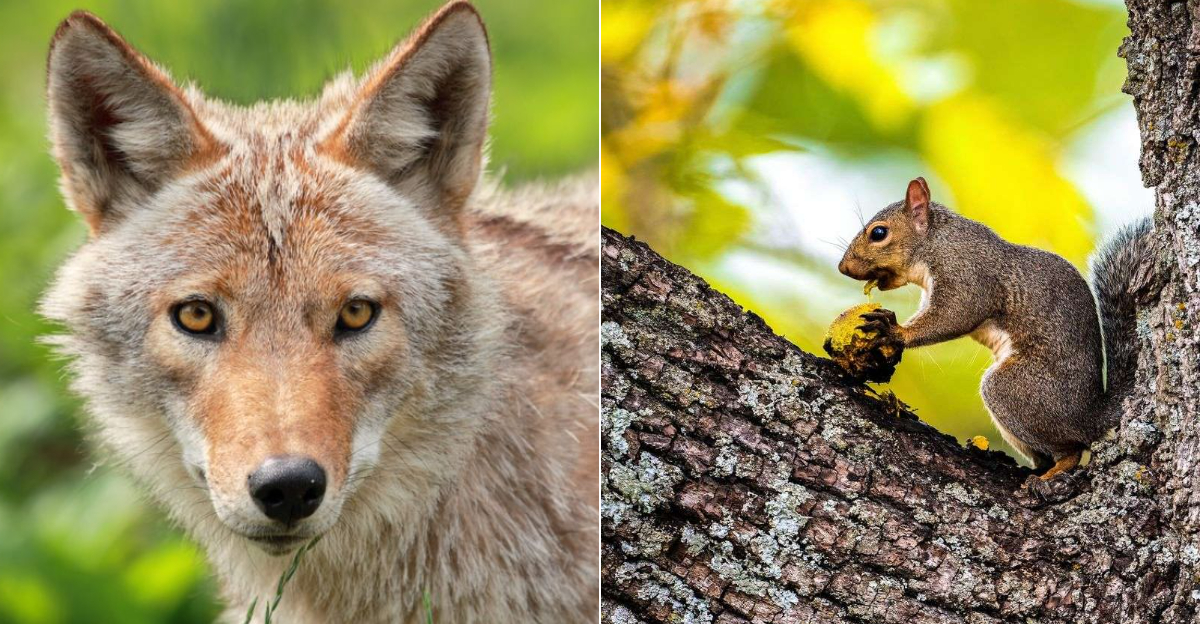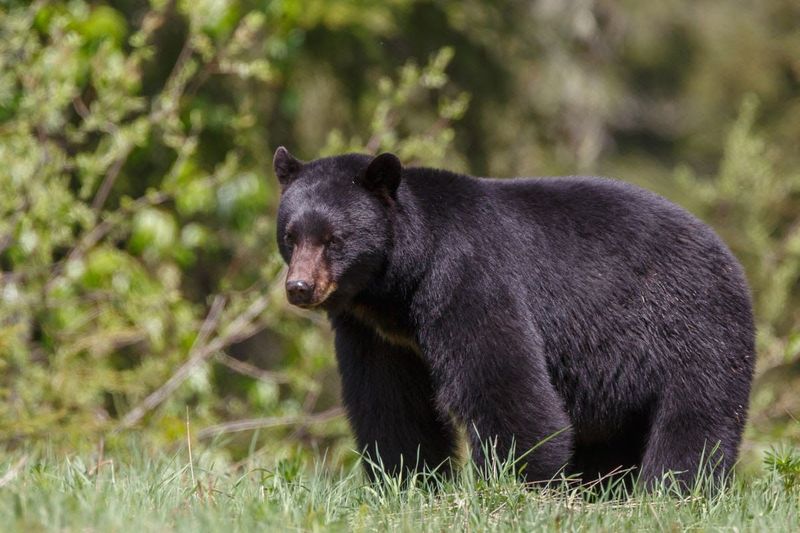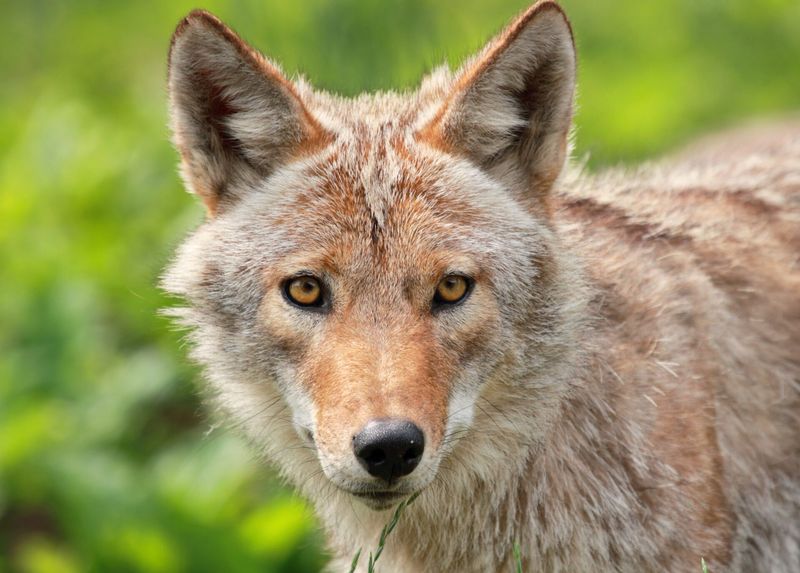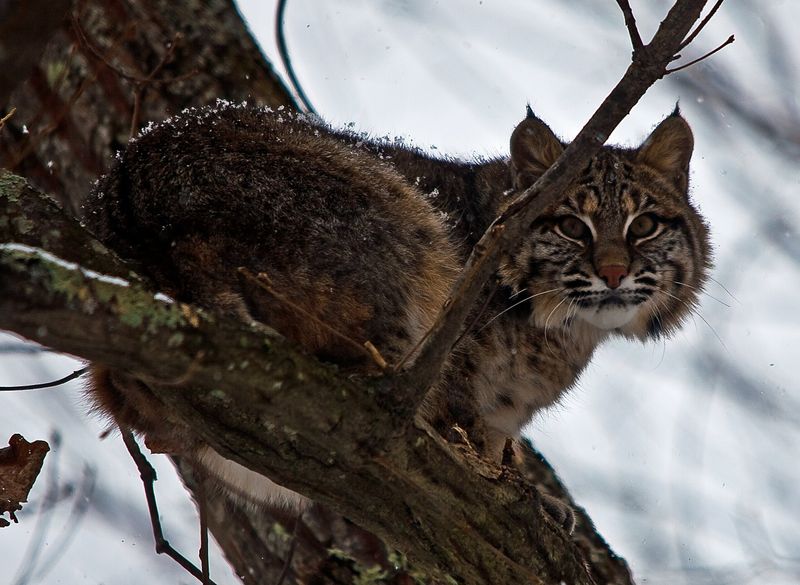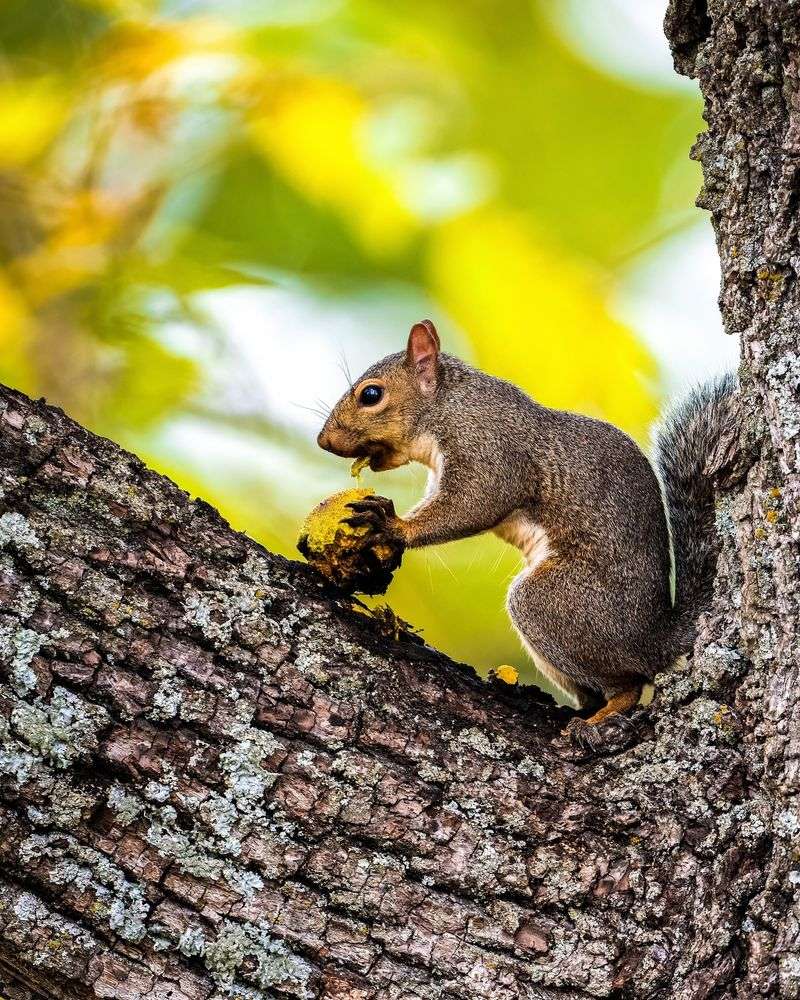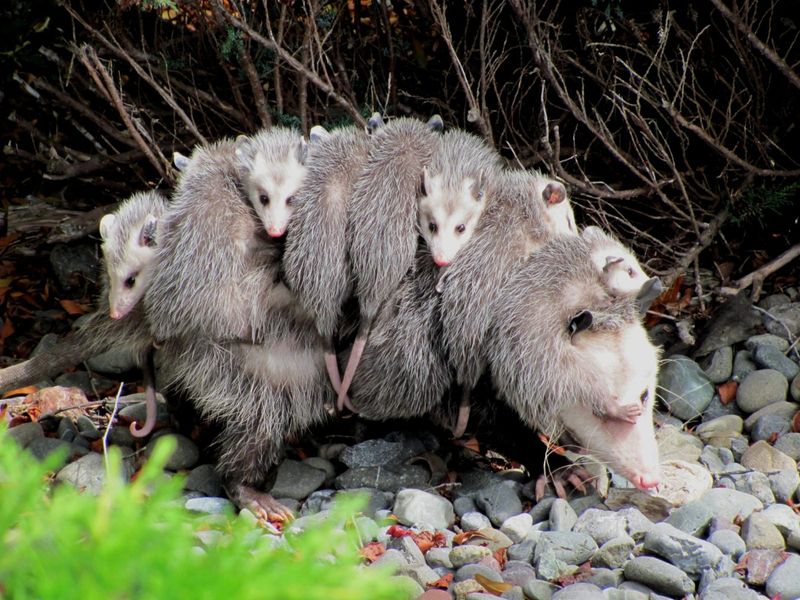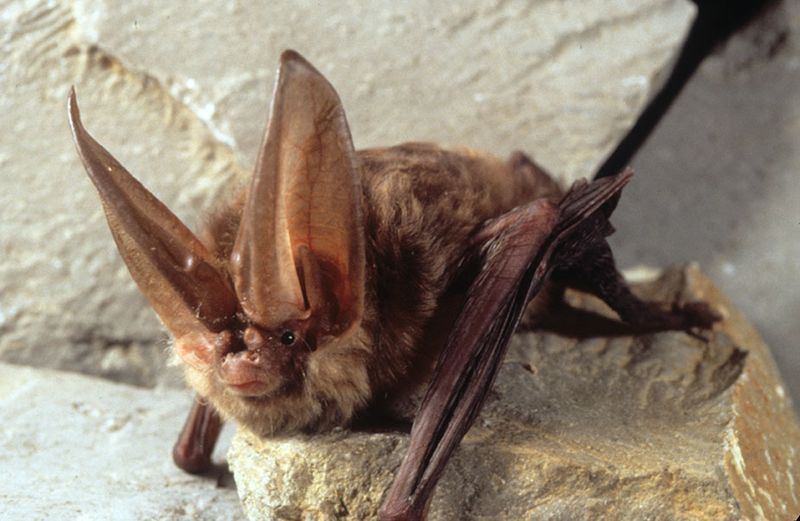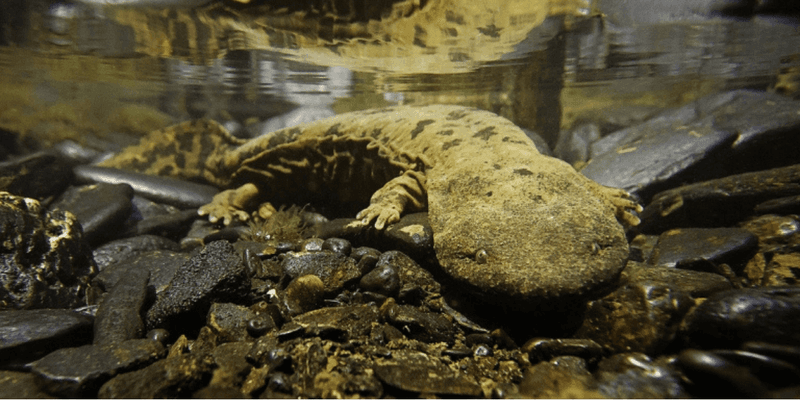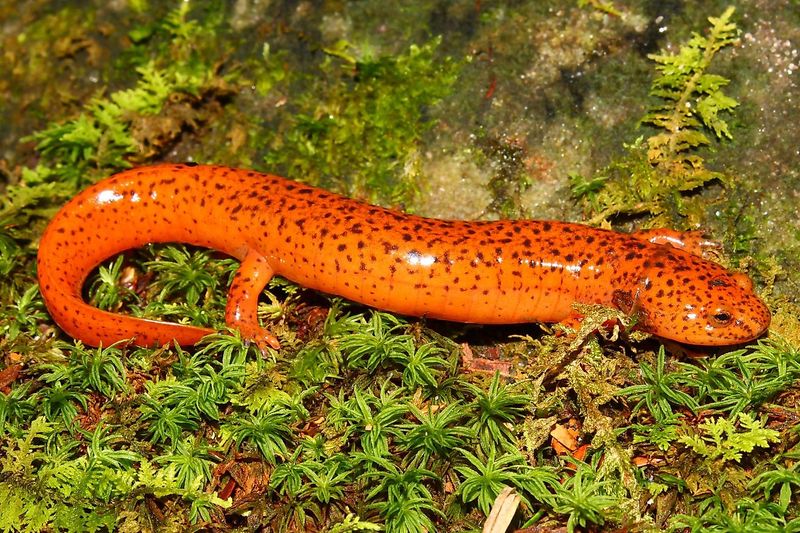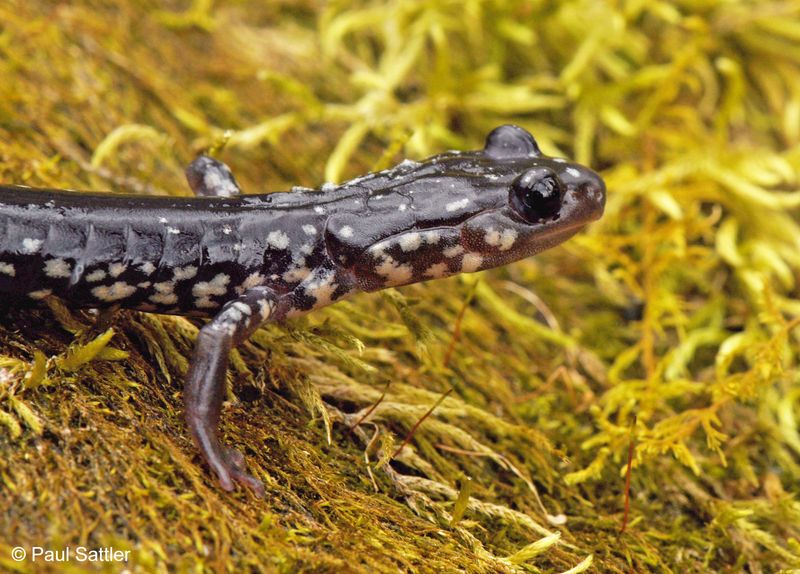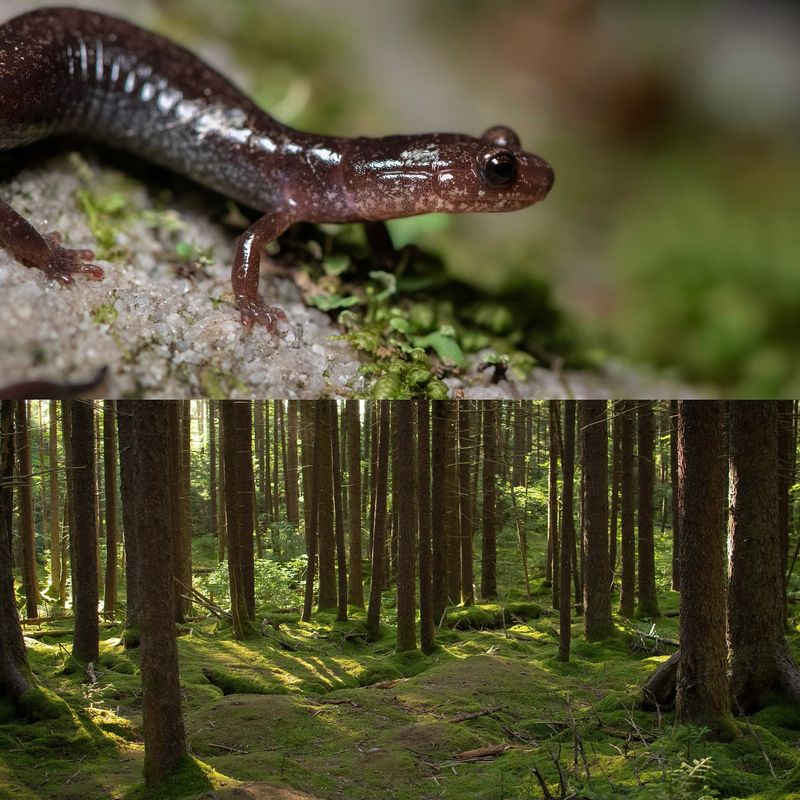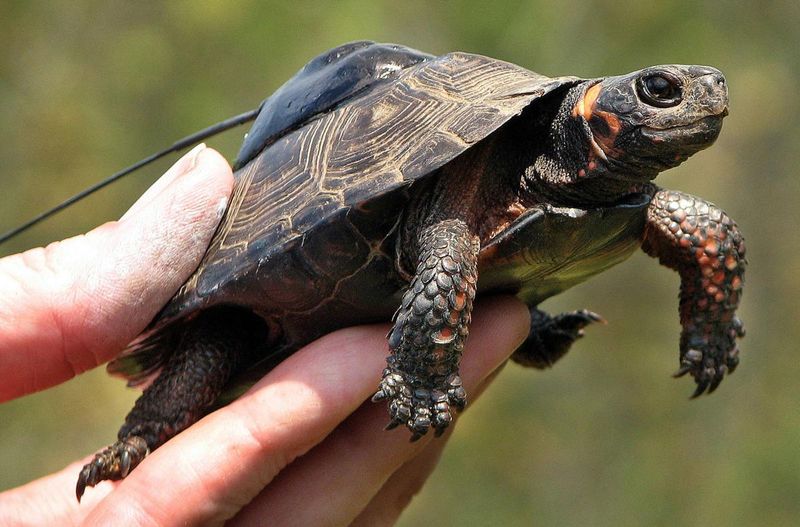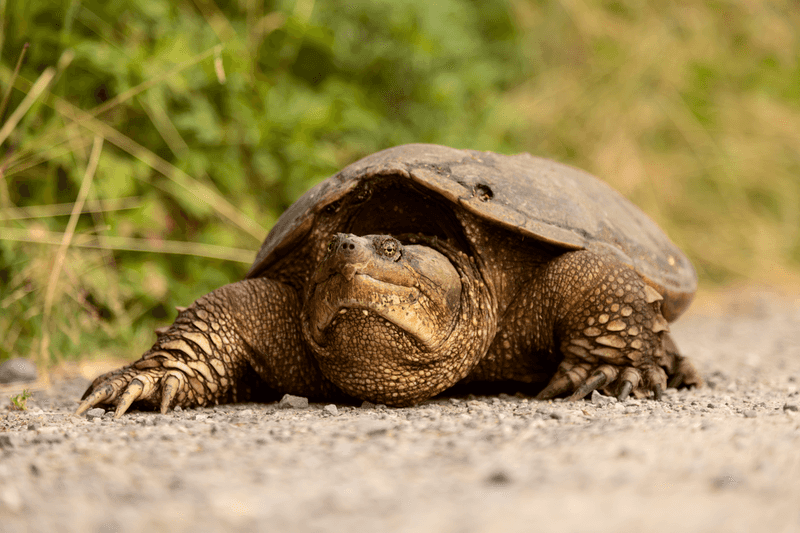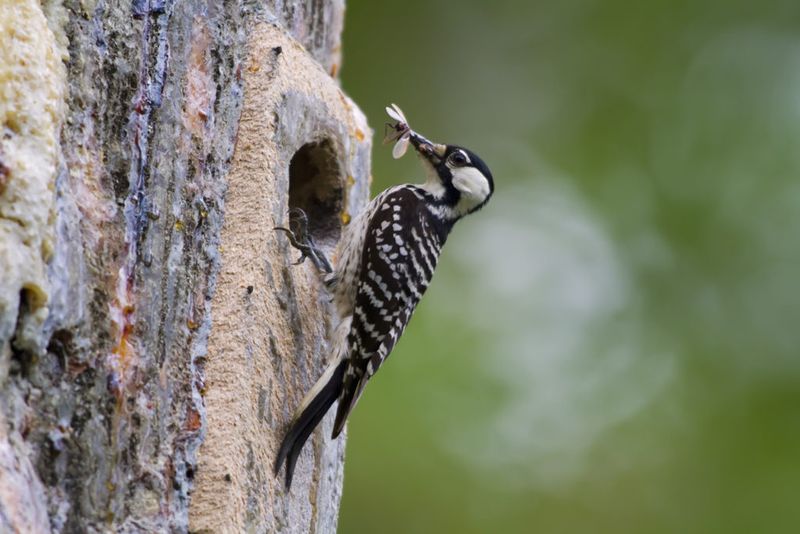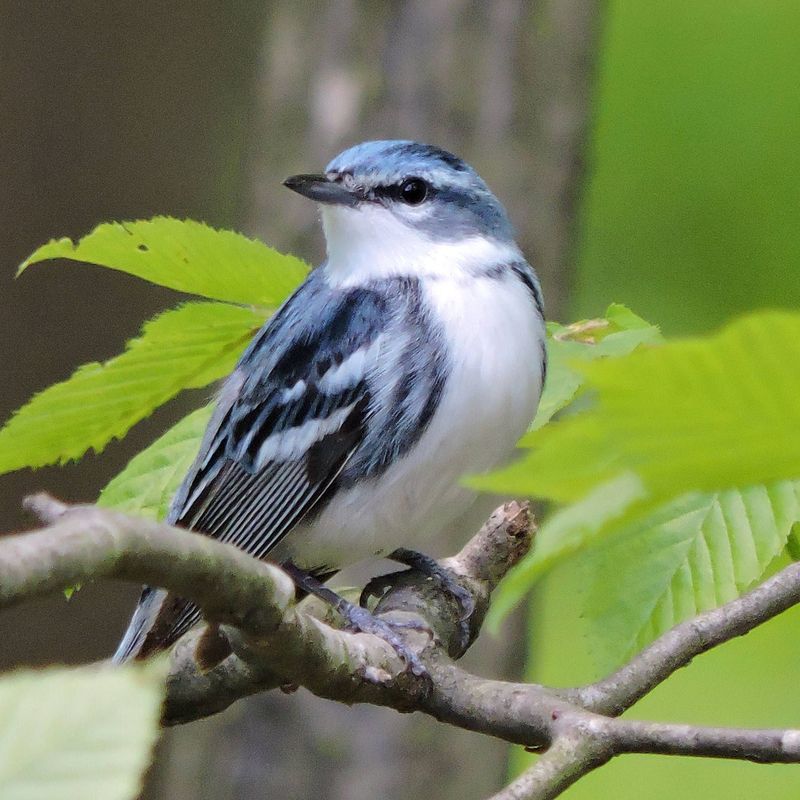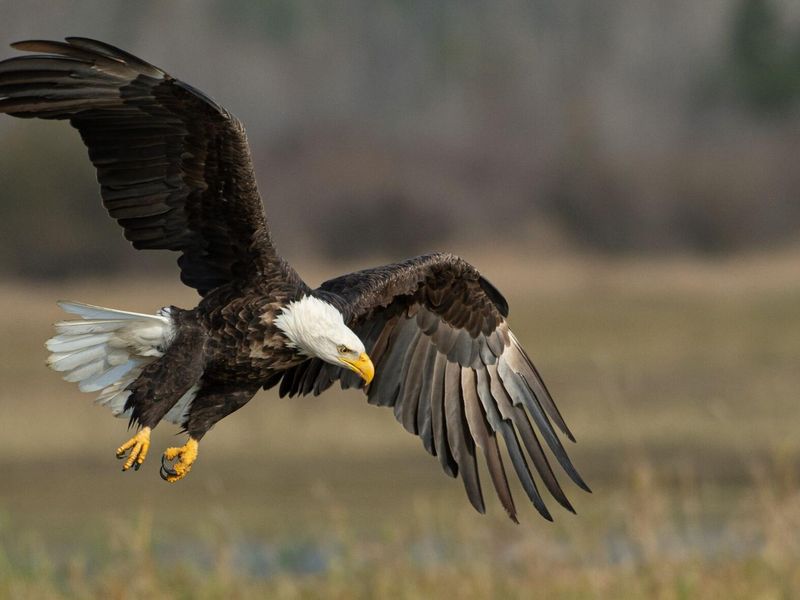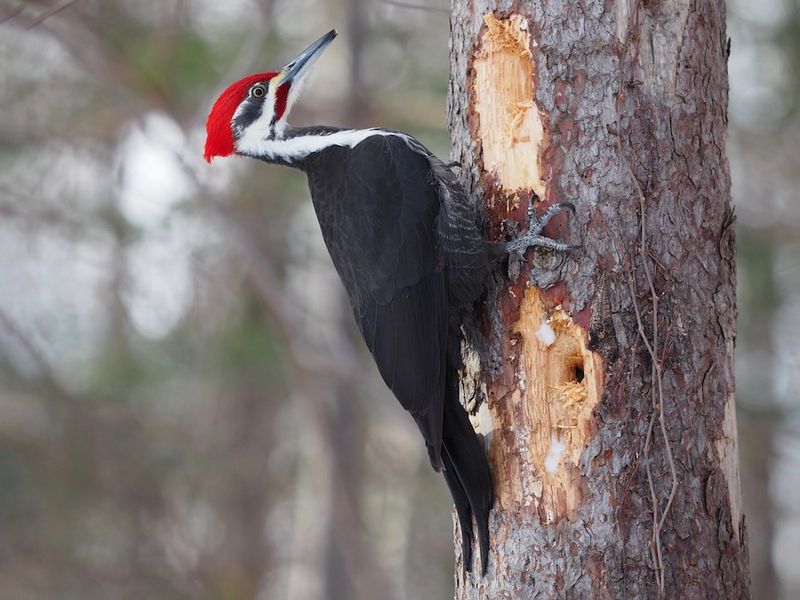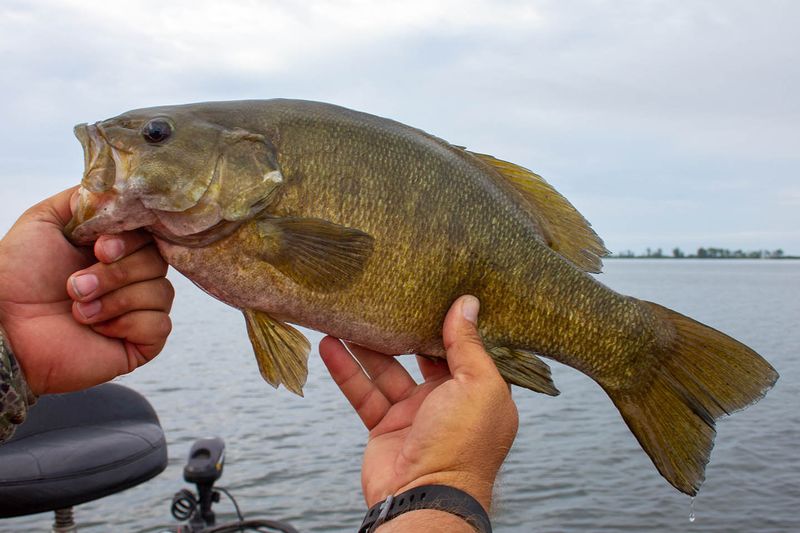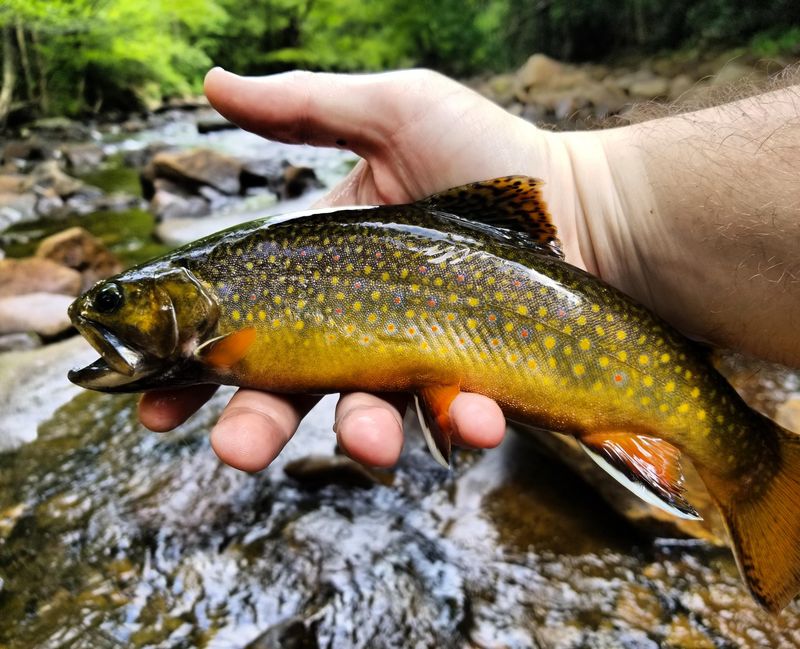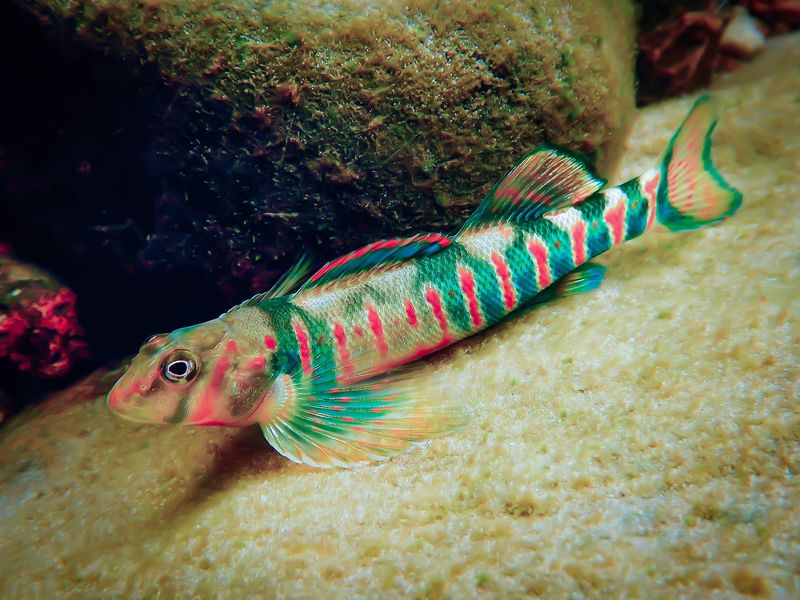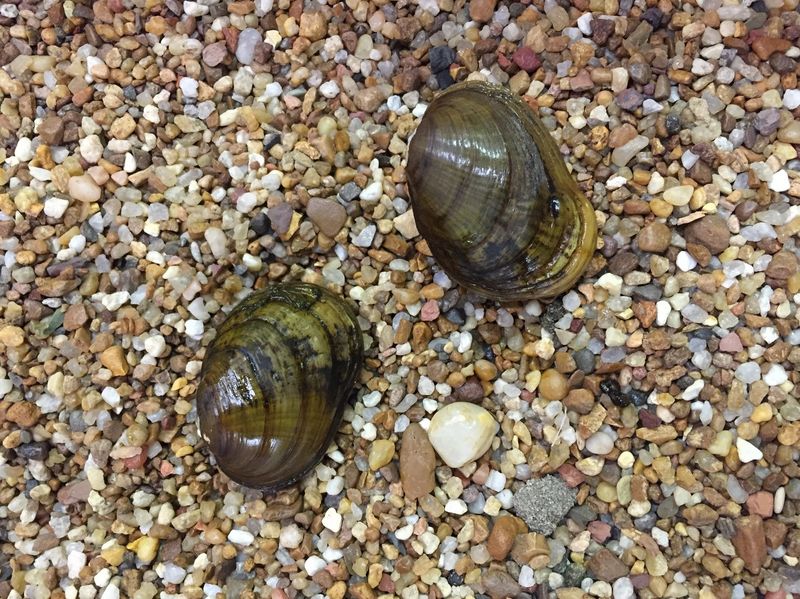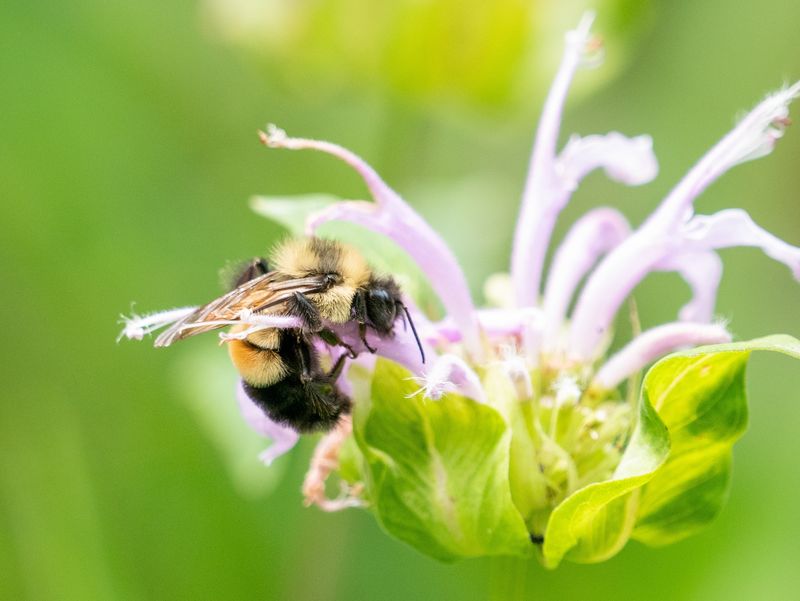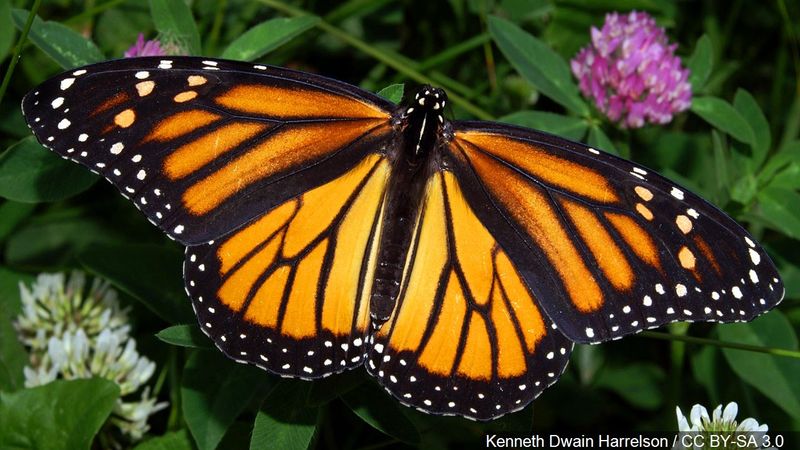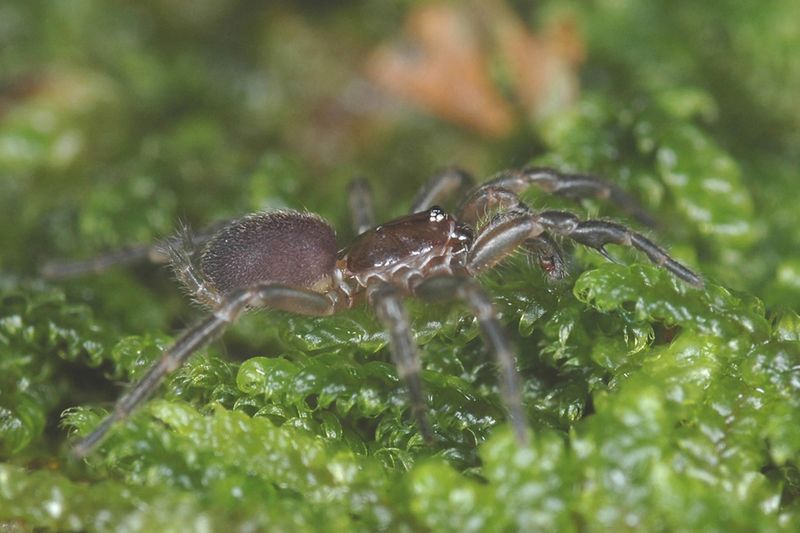West Virginia’s wild heart beats strong through its forests, rivers, and mountains, but also the animals that call them home.
Whether you’re hiking through the Monongahela National Forest or spotting birds along the New River Gorge, you’re sharing the land with some truly remarkable creatures.
Here are 26 animals that not only live here, but help define the incredible biodiversity that makes West Virginia so wild, so rich, and so uniquely alive.
1. American Black Bear
Last summer, I spotted massive paw prints while hiking near Dolly Sods. The American black bear reigns as West Virginia’s largest mammal and serves as our state animal for good reason!
These powerful creatures roam throughout our forests, with males weighing up to 600 pounds. Despite their intimidating size, they’re surprisingly nimble tree-climbers and primarily vegetarian, munching on berries, nuts, and insects.
Conservation efforts have helped their population rebound after near-extinction in the early 1900s. Today, approximately 12,000-14,000 black bears thrive across West Virginia’s wilderness areas, symbolizing the resilience of our natural heritage.
2. White-Tailed Deer
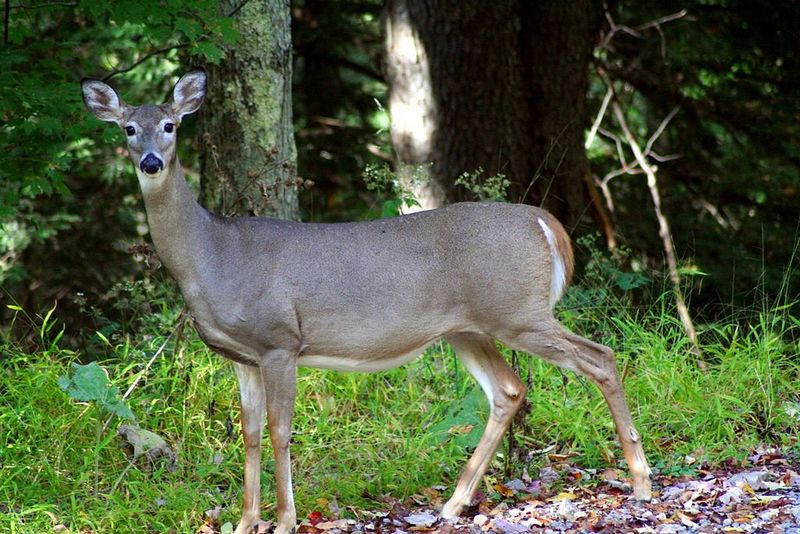
Morning fog still clung to the meadow when I spotted a doe and her fawn delicately picking their way through my backyard garden. White-tailed deer possess an uncanny ability to vanish into the forest at the slightest hint of danger.
Their distinctive white tail, flashed upward when alarmed, serves as a warning signal to other deer. These adaptable creatures thrive throughout West Virginia’s diverse landscapes, from remote wilderness to suburban neighborhoods.
Hunting season brings economic benefits to rural communities while helping manage populations. Their remarkable jumping ability (clearing obstacles up to eight feet high) demonstrates why these graceful animals have successfully adapted to our changing landscape.
3. Eastern Coyote
Their haunting howls echoed through my campsite near Seneca Rocks, sending shivers down my spine! Eastern coyotes have dramatically expanded their territory across West Virginia since the 1970s, filling the ecological niche left by wolves.
Larger than their western cousins due to wolf DNA, these intelligent predators help control rodent populations and maintain ecosystem balance. Their diet includes everything from mice and rabbits to fruits and carrion, showcasing remarkable adaptability.
Despite facing persecution, these resilient canines have thrived. Their presence reminds us that nature constantly evolves—even our misguided attempts to eliminate predators ultimately fail against their remarkable survival skills and intelligence.
4. Bobcat
These elusive predators embody wilderness in their most secretive form. Twice the size of house cats but significantly smaller than mountain lions, bobcats hunt primarily at dawn and dusk. Their spotted coats provide perfect camouflage among dappled forest shadows.
Few West Virginians ever glimpse these phantom cats despite their presence throughout the state. Remarkably adapted to various habitats, from deep forests to rocky outcrops, bobcats maintain healthy populations in West Virginia.
Their stealth, strength, and solitary nature make them fascinating symbols of wild places that still exist in our modern world.
5. Eastern Gray Squirrel
Watching a gray squirrel perform gravity-defying leaps between oak branches in my yard never fails to entertain me! These charismatic rodents contribute more to forest ecology than most people realize.
Master hoarders, they bury thousands of nuts and seeds each fall, remembering most locations through an extraordinary spatial memory. Many forgotten caches sprout into new trees, making squirrels nature’s unwitting foresters.
Their chattering alarm calls alert other wildlife to potential dangers. Adaptable to both deep forests and city parks, eastern gray squirrels showcase remarkable problem-solving abilities.
Though common, these backyard acrobats deserve appreciation for their ecological contributions.
6. Virginia Opossum
America’s only marsupial carries its young in a pouch like kangaroos, a living connection to ancient mammal evolution. Masters of survival, opossums consume thousands of disease-carrying ticks annually and possess natural immunity to snake venom.
Their infamous “playing dead” defense mechanism involves an involuntary trance-like state triggered by extreme fear. Despite their prehistoric appearance and rat-like tail, these beneficial creatures help control pest populations and clean up carrion.
Their low body temperature makes them poor rabies hosts. Next time you spot an opossum waddling through your yard at night, consider it nature’s cleanup crew!
7. Virginia Big-Eared Bat
These rare mammals exist in only a few isolated populations, with West Virginia hosting significant colonies. Their enormous ears, nearly equal to their body length, enable extraordinary echolocation precision for hunting moths and other night-flying insects.
As specialized insect predators, a single colony can consume millions of potential agricultural pests nightly. White-nose syndrome, a fungal disease devastating bat populations across America, threatens these unique creatures.
8. Indiana Bat
During a guided conservation tour, I observed tiny Indiana bats clustered together for warmth—hundreds fitting in space no larger than a basketball! These endangered mammals weigh less than three pennies yet play outsized ecological roles.
Traveling up to 60 miles nightly, Indiana bats consume their body weight in insects, protecting forests and crops from pests.
Their presence in West Virginia highlights the interconnectedness of healthy forests, clean water, and intact cave systems. These diminutive flyers demonstrate how even small creatures significantly impact our environment.
9. Eastern Hellbender
Wading in a crystal-clear mountain stream, I nearly jumped out of my skin when a massive salamander—nearly two feet long—slid between my feet!
Eastern hellbenders, sometimes called “snot otters” or “devil dogs,” rank among North America’s largest amphibians. These prehistoric-looking creatures breathe primarily through their wrinkled skin, which absorbs oxygen directly from fast-flowing, pristine waters.
Their presence indicates exceptional water quality, making them living barometers of stream health. Finding these remarkable salamanders in West Virginia’s waterways gives hope that clean water still flows through parts of the state.
10. West Virginia Spring Salamander
The West Virginia spring salamander showcases nature’s unexpected splashes of color in our state’s cool, shaded waterways. These slender amphibians reach impressive lengths of up to 7.5 inches and sport distinctive orange or salmon-pink coloration with dark speckling.
They inhabit cold, clean springs and headwater streams throughout the Appalachian Mountains, hunting small invertebrates with remarkable efficiency.
Highly sensitive to environmental changes, spring salamanders serve as indicator species for water quality. Protecting these vibrant amphibians means preserving the entire mountain watershed ecosystem.
11. Cow Knob Salamander
Hiking along a foggy ridgeline in the eastern highlands, I discovered a salamander found nowhere else on Earth! Cow Knob salamanders exist only in a small range along the West Virginia-Virginia border at elevations above 2,500 feet.
Their restricted habitat in high-elevation red spruce and northern hardwood forests makes them particularly vulnerable to climate change. As temperatures warm, their cool mountain refuge shrinks.
Federal protection helps safeguard their limited range. Research suggests they may possess unique physiological adaptations to their specialized mountain environment.
12. Cheat Mountain Salamander
Cheat Mountain salamanders exist nowhere else on the planet except for a small area in our state’s highest elevations. These small, dark salamanders with distinctive red cheek patches inhabit the cool, moist environment of red spruce forests.
Their entire global range covers just 80 square miles in parts of Randolph, Pocahontas, Tucker, and Pendleton counties, making them truly West Virginia’s own.
Federally listed as threatened, they face challenges from habitat fragmentation and climate change.
13. Bog Turtle
North America’s smallest turtle species, the endangered bog turtle, makes its home in specialized wetland habitats in eastern West Virginia. Instantly recognizable by bright orange patches on each side of their head, these diminutive reptiles reach only 3-4 inches in length.
They require a specific habitat mosaic of shallow, spring-fed wetlands with soft, muddy bottoms and open canopies for basking. Their presence indicates healthy, functioning wetland ecosystems—increasingly rare in today’s landscape.
14. Common Snapping Turtle
Common snapping turtles look like miniature dinosaurs with their spiky tails, powerful jaws, and prehistoric appearance.
These aquatic behemoths can live 100+ years and grow to 35+ pounds in West Virginia’s lakes, ponds, and slow-moving rivers. Unlike other turtles, they rarely bask, spending most time submerged in muddy bottoms.
Their omnivorous diet includes everything from aquatic plants to fish, frogs, and even waterfowl. Female snappers undertake remarkable nesting migrations each spring, sometimes traveling considerable distances from water to lay eggs.
15. Red-Cockaded Woodpecker
Binoculars trained on a pine tree marked with white paint, I finally spotted the rare woodpecker that engineers entire forest communities! Red-cockaded woodpeckers, named for the tiny red streak on males’ heads, were once widespread but now exist as endangered populations in scattered locations.
Unlike other woodpeckers, they excavate nest cavities exclusively in living pine trees, specifically those infected with heart rot fungus. This process can take years!
16. Cerulean Warbler
These stunning songbirds travel over 3,000 miles from South American wintering grounds to breed in West Virginia’s mature deciduous forests. Their heavenly blue plumage and sweet, buzzy songs announce spring’s arrival in our state’s woodland canopies.
West Virginia hosts significant populations of these rapidly declining birds, which require large tracts of unbroken forest with tall trees. Forest fragmentation and mountaintop removal mining have contributed to their 70% population decline since the 1960s.
17. Bald Eagle
Our national symbol represents one of America’s greatest conservation success stories, rebounding from near-extinction to once again soar above West Virginia’s waterways. These magnificent birds, with 7-foot wingspans and distinctive white heads and tails, build massive nests they reuse and expand yearly.
Some eagle nests weigh over a ton! Protection under the Endangered Species Act, DDT bans, and habitat conservation have allowed their remarkable recovery. Today, dozens of nesting pairs raise young throughout West Virginia, particularly along major rivers and lakes.
18. Pileated Woodpecker
The machine-gun drumming echoed through the forest as I watched a crow-sized woodpecker with a flaming red crest hammering at a dead oak! Pileated woodpeckers, with their prehistoric calls and powerful excavating abilities, create habitat that benefits countless forest species.
These magnificent birds leave distinctive rectangular holes in dead trees while searching for carpenter ants and wood-boring beetles. Their abandoned nest cavities provide homes for owls, ducks, and other wildlife.
At nearly 20 inches long, they rank as North America’s largest woodpecker (excluding the likely extinct ivory-billed). These forest architects help maintain woodland health by controlling insect populations.
19. Smallmouth Bass
Smallmouth bass deliver pound-for-pound some of the most exciting fishing action in West Virginia’s flowing waters. These hard-fighting game fish thrive in the clean, rocky streams and rivers throughout our state.
Their bronze coloration with dark vertical bars provides perfect camouflage among river rocks and submerged logs. Opportunistic predators, they feed on crayfish, hellgrammites, smaller fish, and even surface insects.
Catch-and-release practices help maintain trophy populations in popular fishing destinations like the New, Greenbrier, and South Branch Potomac rivers. These remarkable fish connect West Virginians to our aquatic heritage.
20. Brook Trout
Brook trout, with their breathtaking colors and delicate spotted patterns, represent Appalachian stream ecology at its finest. These native salmonids require the coldest, cleanest water, making them sensitive indicators of environmental quality.
Their olive backs with worm-like markings, vibrant red spots with blue halos, and orange-red fins with white edges create living art in our mountain headwaters. Acid mine drainage, sedimentation, and warming temperatures threaten many populations. Conservation efforts focus on stream restoration and protecting forested watersheds.
Finding wild brook trout in remote streams connects modern anglers to West Virginia’s pristine natural heritage—a living link to waters as they existed before European settlement.
21. Candy Darter
These small but spectacular fish showcase nature’s artistic flair in West Virginia’s clean, fast-flowing streams. Males display brilliant turquoise, orange, and red coloration during breeding season, rivaling tropical fish in beauty.
Found only in specific tributaries of the New River system, candy darters require clean gravel and cobble substrates with swift current. Listed as federally endangered in 2018, they face threats from hybridization with introduced variegate darters, sedimentation, and water quality degradation.
22. Northern Riffleshell Mussel
The endangered Northern Riffleshell represents one of West Virginia’s most imperiled aquatic species. These remarkable mollusks can filter up to 15 gallons of water daily, removing algae, bacteria, and pollutants. Their complex life cycle involves parasitizing specific fish species to transport their larvae upstream.
Individual mussels can live 50+ years, serving as long-term indicators of water quality. Pollution, dams, and invasive species have eliminated them from 95% of their historic range.
23. Rusty Patched Bumblebee
The federally endangered rusty patched bumblebee has disappeared from 87% of its historic range. Once common across the Eastern United States, including West Virginia, these important pollinators now exist in scattered, isolated populations.
They visit a wide variety of flowering plants and can forage in cooler temperatures than honeybees, making them especially valuable for early spring blooms. Pesticides, habitat loss, climate change, and disease have contributed to their decline.
Creating pesticide-free flowering habitats helps support remaining populations. These fuzzy pollinators remind us how quickly once-common species can face extinction and the urgent need to protect all native pollinators.
24. Monarch Butterfly
Watching monarch butterflies fuel up on my garden’s milkweed before their epic journey to Mexico never fails to fill me with wonder! These iconic orange and black insects undertake one of nature’s most extraordinary migrations, traveling up to 3,000 miles to specific overwintering sites.
West Virginia serves as important breeding habitat and migration corridor. Monarchs depend entirely on milkweed plants for reproduction—females lay eggs only on these plants, and caterpillars eat nothing else.
25. Spruce-Fir Moss Spider
The federally endangered spruce-fir moss spider, measuring just 1/8 inch, inhabits a very specialized habitat. These tiny reddish-brown spiders live exclusively in the damp moss mats growing on rocks in high-elevation spruce-fir forests.
They construct tube-shaped webs within the moss where they hunt small invertebrates. Their entire global range includes just a few mountain peaks in the Southern Appalachians.
26. Monongahela Crayfish
Flipping rocks in a small mountain creek revealed a brilliant blue crayfish darting for cover—a species found nowhere else on Earth except West Virginia!
The Monongahela crayfish inhabits streams within the Monongahela River watershed, showcasing the remarkable biodiversity of our freshwater ecosystems. These colorful crustaceans serve as nature’s recyclers, processing dead plant and animal material while providing food for fish, birds, and mammals.
Their burrowing activities help oxygenate stream sediments. Some individuals display striking blue coloration that rivals tropical aquarium species.
